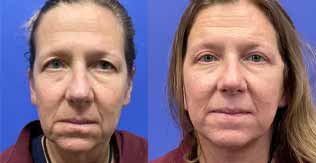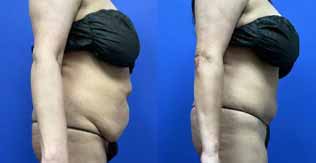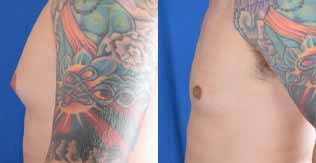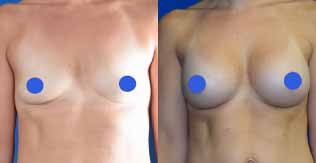Lipo, Fat, and Exercise
Offered at our convenient location in Denver
Diet and exercise go hand in hand when you want to lose weight. While weight loss can be a challenging factor to overcome, it is a crucial part of leading a healthy, long life.
Think of it as one of life’s necessary evils. Regulating what we eat and how much we exercise can significantly affect our overall quality of life. Dr. Millard feels that it is very important to provide patients with tools that can help them learn more about their bodies and how to keep them happy and healthy!
Contents
What Is Fat?
Other than being considered unsightly in modern society, fat is an energy storage for the body. It has become a common misconception that all fat on the body is bad; however, this is untrue. The technical term for body fat is adipose tissue, and the individual cells that make up this tissue are called adipocytes. The body needs a certain amount of these cells to allow itself to function efficiently.

Understanding the way fat is stored in the body, which fats are good versus bad, and the reasoning behind it are all essential information to know when seeking long-term weight loss. Dr. Millard has studied and practiced for many years to obtain his vast knowledge of the body and the anatomy of fat to provide his patients with the best results possible. However, there are some cases in which fat cannot be diminished through diet and exercise alone. In these cases, he helps patients achieve their bodily goals through other fat reduction methods.
Fat Anatomy
Essential Fat
Essential fat is required to protect the body from certain types of diseases and act as a guard to protect the internal organs from bruising or other forms of damage. This fat can be broken down into two further components: subcutaneous fat and intramuscular fat.
Subcutaneous Fat
Subcutaneous fat lies just under the skin, providing thermal protection to the body. This layer of fat also helps to prevent bruising. This is the fat that is often removed during liposuction procedures.
Intramuscular Fat
Intramuscular fat is found on muscles. This type of fat provides extra fuel for the body and is what helps to protect the internal organs, such as the stomach, intestines, and colon.
When considering weight loss, women must take into consideration that the percentage of body fat is higher than that of men. The female body requires extra energy storage for reproduction needs and other bodily functions.
Reserve Fat
The amount of fat in the body that is considered healthy is determined based on gender, age, and height. Our bodies require a certain amount of fat to be on reserve to maintain sufficient energy and overall health. This reserved fat poses no health risks to the body and actually provides benefits to the patient’s overall health.
Excess Fat
After calculating the amount of fat that is considered to be healthy, anything that surpasses that number will be considered as excess. Although in small amounts excess fat poses no threat to the body, in large amounts it can result in significant health risks.
Layers of Fat
There are essentially three layers of Fat:
1. Subdermal Fat –The first layer of fat immediately underneath the skin. This layer responds to the VASER very well for skin tightening and the Cellulaze for reduction of cellulite. Traditional liposuction technologies are inadequate and sometimes even dangerous in this layer, therefore you want to seek out a body contouring surgeon who has either the VASER or LASER/Cellulaze technologies and is trained in the advanced technique of “Superficial Liposuction.”
2. Superficial Fat – This is the upper most layer of fat just beneath the subdermal fat. Again this is a layer of fat that responds much better to VASER than traditional liposuction technology. It is this layer, once removed, that produces a more aggressive fat reduction appearance and in some instances doubles the amount of fat that can be removed from a particular body area. This is the layer that is also used to enhance the 3D and 4D body sculpting results seen with VASER Hi Def. This layer is much more resistant to weight reduction. In fact, This is that last layer body builders shed off when they reduce from 10-12% body fat to 5-6% body fat. VASER Hi Def reduces this layer to a 5-6% fat appearance, without all of the unhealthy side effects of trying to do this with diet and exercise. In this way VASER Hi Def is an adjunct to your fitness regimen.
3. Deep Fat – This is the lowest layer of fat. In most cases this is the only layer that many liposuction surgeons remove. With advanced techniques such as VASER Hi Def, this is removed along with reshaping and removing much of the superficial layer. This the layer that responds first to weight reduction.
How Diet Reduces Fat
Calculating the number of calories a person’s body should consume is based on their age, gender, weight, height, and amount of daily activity.
A balanced diet is essential when looking to lose excess fat. The basics of weight loss are simple- burn more energy (calories) in a day than are consumed. This means that eating a healthy diet within a reasonable caloric intake will ensure that excess energy is not being stored.
For example, if a patient works a desk job which requires less movement, their body will need less energy, or calories, to sustain itself in comparison to a patient who does labor-intensive work. The most recent equation to determine a person’s basal metabolic rate (BMR), which is the amount of energy expended per day, is the Mifflin – St Jeor Formula. Using this equation can help patients calculate the number of calories they should not exceed when looking to reduce fat.
Men:
10 x weight (kg) + 6.25 x height (cm) – 5 x age (y) + 5
Women:
10 x weight (kg) + 6.25 x height (cm) – 5 x age (y) – 161
How Exercises Reduces Fat
Constructing a good exercise routine and sticking with it is another important factor to the weight loss game.
Many people associate cardio, such as running, hiking, and swimming, with significant weight loss; however, this is untrue. Cardio is effective at reducing fat throughout the body, but large amounts of cardio can cause the body to feed on muscles for energy rather than the existing fat.
Combining weight training or body weight training with cardio can help to improve the body’s metabolism. The more muscle a person has on their body, the more calories they will burn in a day. Therefore, muscle is very beneficial to weight loss and the longevity of the weight loss results. Exercise is not confined to a gym; patients can take their active lifestyles outdoors if that works better for them. Regardless of the activities they choose, Dr. Millard recommends finding a good balance between cardio and weighted exercises to turn the body into a calorie burning machine! This can seem daunting to some, but the numerous benefits that exercise provides the body speak for itself.
Liposuction
 There may come a point in which diet and exercise become ineffective for a patient’s weight loss goal. In these cases, Dr. Millard can use liposuction to remove the excess fat. Liposuction is a surgical procedure that suctions and removes fat from the body. Dr. Millard performs this procedure by making small incisions around the area of concern. Through these incisions, he will insert a cannula, or a thin surgical tube, to suction the fat out of the body. Once the fat has been removed, the incisions will be closed.
There may come a point in which diet and exercise become ineffective for a patient’s weight loss goal. In these cases, Dr. Millard can use liposuction to remove the excess fat. Liposuction is a surgical procedure that suctions and removes fat from the body. Dr. Millard performs this procedure by making small incisions around the area of concern. Through these incisions, he will insert a cannula, or a thin surgical tube, to suction the fat out of the body. Once the fat has been removed, the incisions will be closed.
Dr. Millard’s liposuction technique of choice is VASER lipo, a technique he helped pioneer that uses ultrasound energy to break down the fat before its removal from the body.
Dr. Millard liked to place compression garments over the treatment areas to not only assist with swelling, but they will help the skin to form to the body’s new contour. The beautiful thing about liposuction is that it can be performed on virtually anywhere on the body. Therefore, a wide variety of patients can receive the benefits of liposuction. Patients who would like further information regarding this procedure can click here to take a look at Dr. Millard’s liposuction process and techniques.
Skin Tightening After Liposuction
Depending on the amount of fat that was lost or removed, patients may be left with excess skin. This is because the skin stretches due to weight gain, but once the fat has been removed, the skin does not fully contract to the body’s new shape. In this case, patients may need to seek skin tightening treatments such as a body lift to remove the sagging skin and redefine the patient’s figure to appear more firm and youthful.
Dr. Millard uses VASER technology for his liposuction procedures which offers skin tightening benefits; however, if there is severe skin laxity, it may not be sufficient enough to correct the concerns. Millard Plastic Surgery has an entire page dedicated to his skin tightening procedures, and how it can benefit his patients. Please click here for more information.
Maintaining Weight Loss After Liposuction
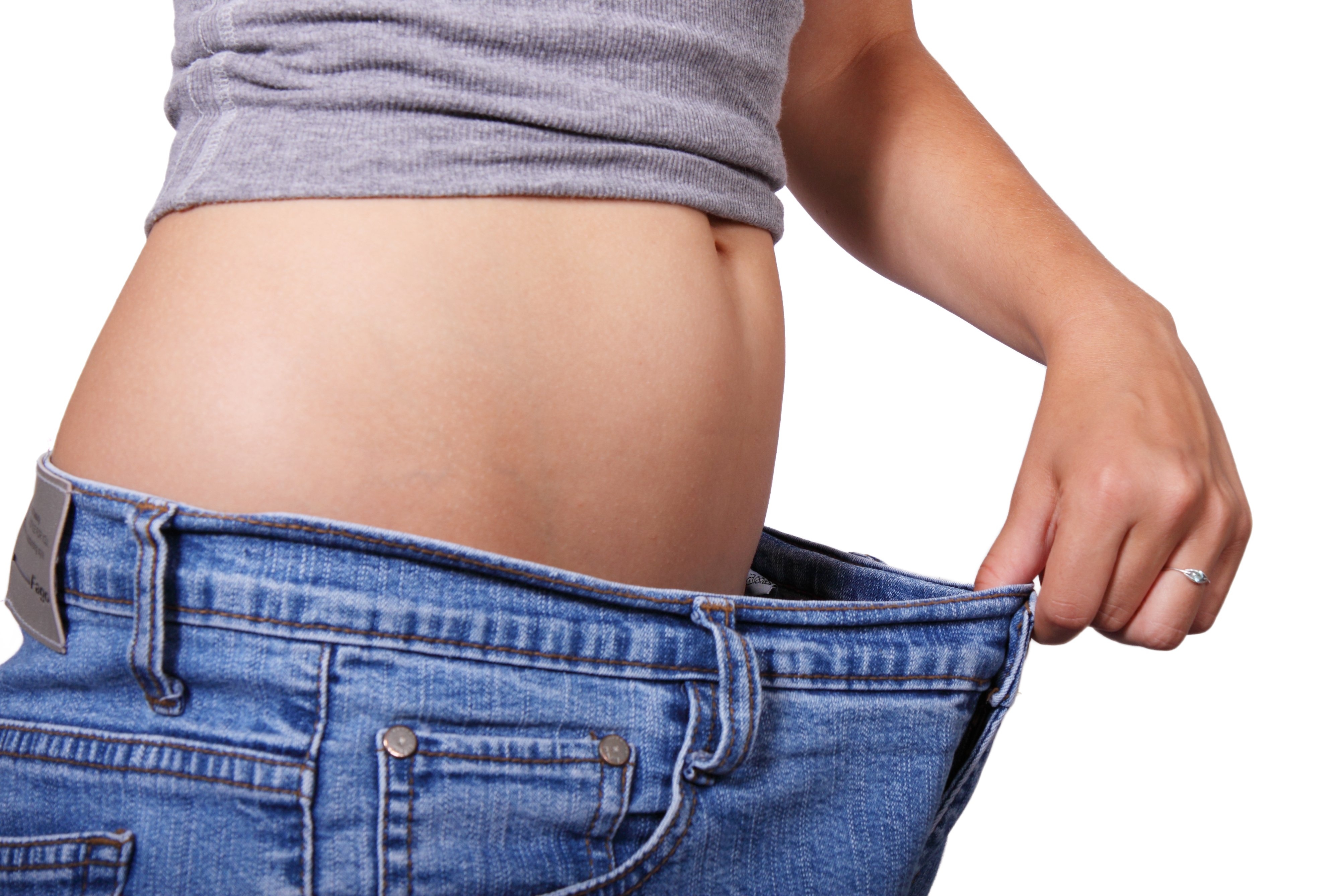 After undergoing a liposuction procedure, it is very important to maintain a healthy lifestyle after the procedure. Dr. Millard places a heavy importance on establishing a strong diet and exercise regime to ensure the patient’s results are long-lasting. Although liposuction does remove the fat cells from the body, it does not prevent a patient from regaining the weight in surrounding areas. It is important to stay active and eat properly to maintain the weight loss results.
After undergoing a liposuction procedure, it is very important to maintain a healthy lifestyle after the procedure. Dr. Millard places a heavy importance on establishing a strong diet and exercise regime to ensure the patient’s results are long-lasting. Although liposuction does remove the fat cells from the body, it does not prevent a patient from regaining the weight in surrounding areas. It is important to stay active and eat properly to maintain the weight loss results.
After the liposuction procedure, Dr. Millard often works with his patients to help them form better dietary habits and an exercise regimen that is best for them. Not everyone wants to run for miles, lift heavy weights, and eat only salads- and they don’t have to! At Millard Plastic Surgery, we help patients build a lifestyle that is not only healthy but also fits their wants and needs. Looking and feeling good does not have to be a tedious task, with hard work and motivation it can become part of a person’s daily routine!
Is Fat Removal Permanent?
Yes, you are essentially born with the number of fat cells you are going to have. When you are heavier your fat cells store more and when thinner, you store less. Once the fat cell is gone it cannot store in that area anymore.
